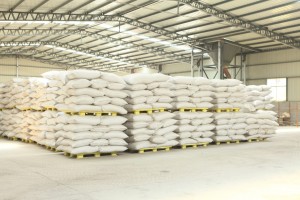Post Date:24,Oct,2022
It is normal for sand and gravel to have some mud content, and it will not have a big impact on the performance of concrete. However, excessive mud content will seriously affect the fluidity, plasticity and durability of concrete, and the strength of concrete will also be reduced. The mud content of the sand and gravel materials used in some areas is as high as 7% or even more than 10%. After adding admixtures, the concrete cannot achieve the proper performance. The concrete does not even have fluidity, and even a little fluidity will disappear in a short time. The main mechanism of the above phenomenon is that the soil in the sand has extremely high adsorption, and most of the admixtures will be adsorbed by the soil after mixing, and the remaining admixtures are not enough to adsorb and disperse the cement particles. At present, polycarboxylate admixtures have been widely used. Due to the small amount of this product, the above phenomenon is more serious when it is used to formulate concrete with high content of mud and sand.
At present, in-depth research is being carried out on the measures to solve the concrete mud resistance. The main solutions are:
(1) Increase the dosage of admixtures. Although this method has obvious effects, because the dosage of admixtures in concrete needs to be doubled or more, the cost of concrete manufacturing increases. It is difficult for manufacturers to accept.
(2) Chemical modification of the admixture used to change the molecular structure of the admixture. There are many related reports, but the author understands that these newly developed anti-mud additives still have adaptability to different soils.
(3) To develop a new type of anti-sludge functional admixture to be used in combination with commonly used admixtures. We have seen an imported anti-sludge agent in Chongqing and Beijing. The product has a large dosage and a high price. It is also difficult for general commercial concrete enterprises to accept. In addition, this product also has the problem of adaptability to different soils.
The following anti-mud measures are also available for research reference:
1. The commonly used admixtures are mixed with materials with a certain dispersibility and low price to increase the components that can be adsorbed by the soil, which has a certain effect.
2. Incorporating a certain amount of water-soluble low-molecular-weight polymer into the admixture has a certain effect.
3.Use some dispersants, retarders and water reducers that are prone to bleeding.
Post time: Oct-24-2022








